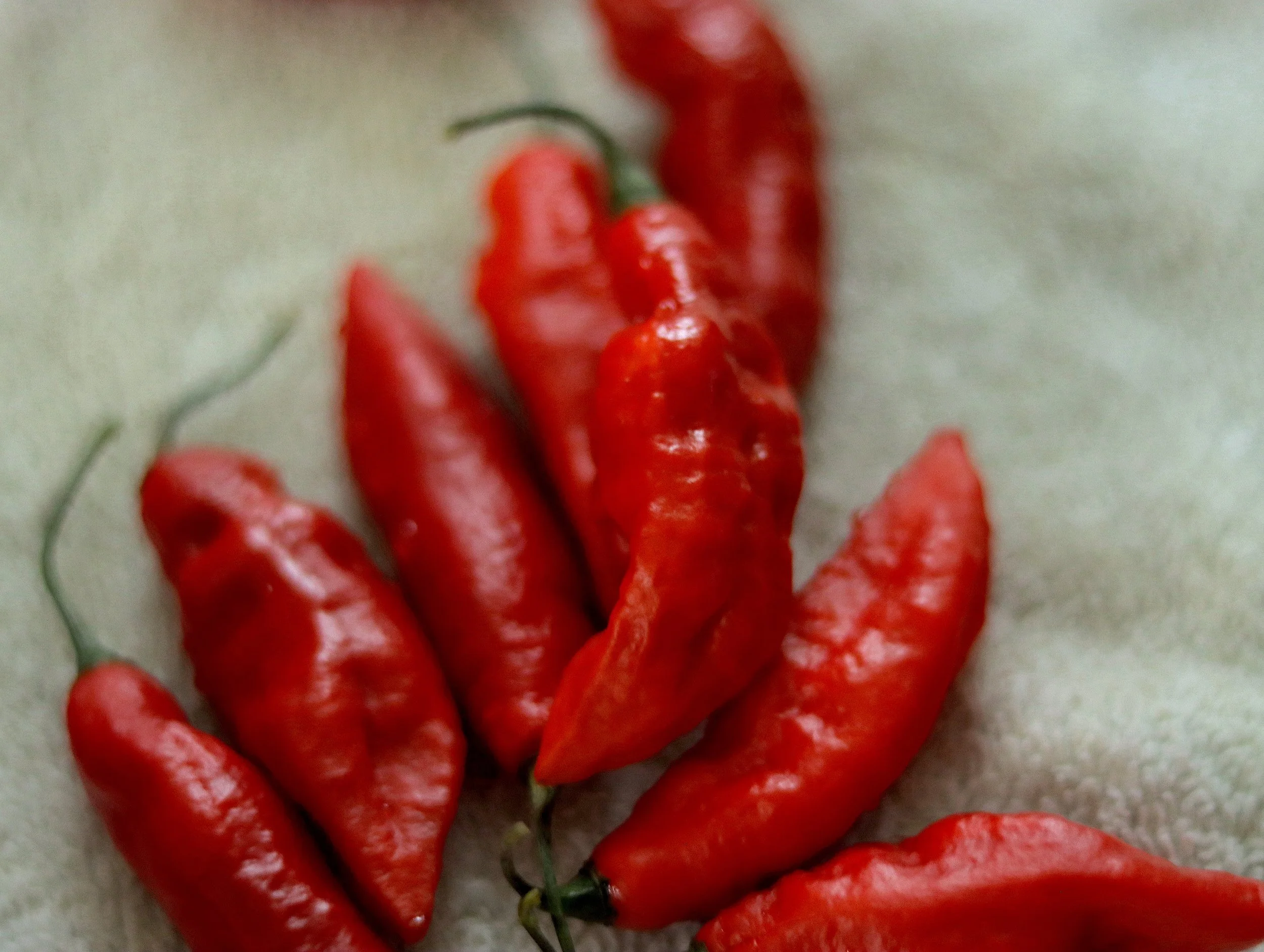How To Preserve Your Peppers When You Have Too Many
If you grow your own peppers, then you are pretty familiar with having a lot of them on hand. Some plants will grow 100 plus peppers in a season!
There are many ways to preserve your newly harvested peppers. You can freeze them, pickle, dehydrate or lacto ferment them. I am going over the lacto fermentation method today. Once the peppers get fermented, they will stay good in the refrigerator for a very long time. I have peppers in my refrigerator that have been there for a little over 1 year and still good!
Ingredients:
Peppers that you have an abundance of (I am showing habanero and ghost peppers)
Filtered water
Fine sea salt
Herb stems (I have rosemary)
Garlic clove
Tools needed:
***The following link is an amazon associate link. As an Amazon Associate I earn from qualifying purchases, I make a small commission if purchased at not extra cost to you
Quart sized mason jars
Mixing bowl
Cutting board
Sharp knife
Fermentation weight
Glass dish for catching over spill
How to make it:
The fermentation method we’re talking about here is lactic acid fermentation. I will be using a 3% brine for fermenting the peppers as I find the salt amount t be perfect in taste. You can go from 2-4 % without worrying about the peppers fermenting properly.
Pull the stems off the peppers and cut in half. Save the seeds if desired and discard any that are rotten or discolored inside or any that have any signs of aging bad. The heat comes from the placenta , though habaneros and ghost peppers are very hot and removing the placenta won’t change the heat all that much anyway.
Clean mason jars with hot soapy water, let air dry.
The following equation will be used for making the brine for the peppers.
Peppers + Water = “x” grams
Multiply “x” grams by 3% or .03 to get amount of fine sea salt needed for the brine.
Example:
Place empty mason jar on the scale, zero (tare) the scale. Set scale to read grams. Add the peppers, garlic, herb stems and water to the jar. The water is to be filled in the jar just below the neck of the jar.
Let’s say the total weight of that jar is 870 g. Multiply it by 3%.
We get 26.1 g. This is the salt amount we need to make the brine. If your scale doesn’t read decimal points, round to the nearest whole number.
Place empty mixing bowl on the scale, zero out. Add the calculated amount of salt into the bowl, which is 26 g. Pour the water from the jar into the mixing bowl, using a lid to hold back the ingredients. Mix with a whisk to dissolve the salt entirely.
Pour the newly made brine back into the jar with the peppers.
Place fermentation weight into the jar to keep the ingredients submerged. I use an empty glass baby food jar as a weight. A ziplock bag filled with water is also acceptable.
Make sure the ingredients stay underneath that brine level, this is an anaerobic environment. This is the environment that lactobacillus thrives in. This bacteria is salt tolerant and is what creates the lactic acid. The lactobacillus feeds off the sugars in the peppers and the by-product created is lactic acid. If the ingredients are allowed to touch air, mold will most likely grow and you will need to scrap the project and start over.
Let ferment on your counter top or panty. Room temperature 68-75 degrees is best. I have a spot in my pantry that I keep my ferments at. Leave to ferment for 2-4 weeks, depending on how funky and acidic you want your peppers to be.
After the first week or two, you may see a whiteish film develop on the surface of the brine. This is Kahn yeast or pellicle which is a natural byproduct of fermentation. This is an aerobic yeast that forms during the fermentation process. It is harmless if consumed, however I don’t like the taste. Therefor, I skim it off the top before consuming what is being fermented. Some people don’t mind the taste of the kahm and say it adds a nice funkiness to the ferment. Do what you want with it.
I test the pH of the brine after 1 week to make sure the fermentation process is working. If it is 4.6 or lower, it is safe to keep fermenting. After week 2-4, it should be at 4 or lower. The peppers I ferment for my hot sauces usually have a pH of 3.3-3.5. If the brine is above 4.6, I do not consider the food safe to consume as bad bacteria may have been allowed to form.
Once the fermentation process is done, the jars need to be covered with a lid. I place parchment paper between the opening of the jar and the lid. The acidity of the brine will most likely eat away at the lid and ruin it. Plus, you don’t want your brine with the peppers being at risk for contamination. Place the fermented peppers in the refrigerator. They will stay good for minimally 6 months. As I said in the beginning, I have had the same peppers in the refrigerator just over 1 year and they are still good!
These fermented peppers are great in salads, sandwiches and made into hot sauces (which I make a ton of).
Enjoy!
Logan
